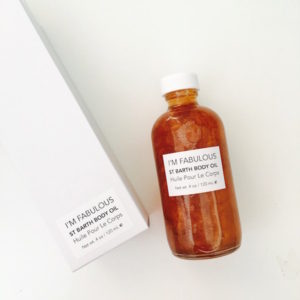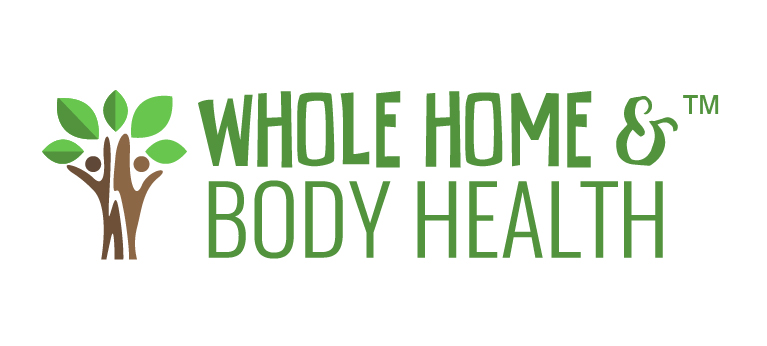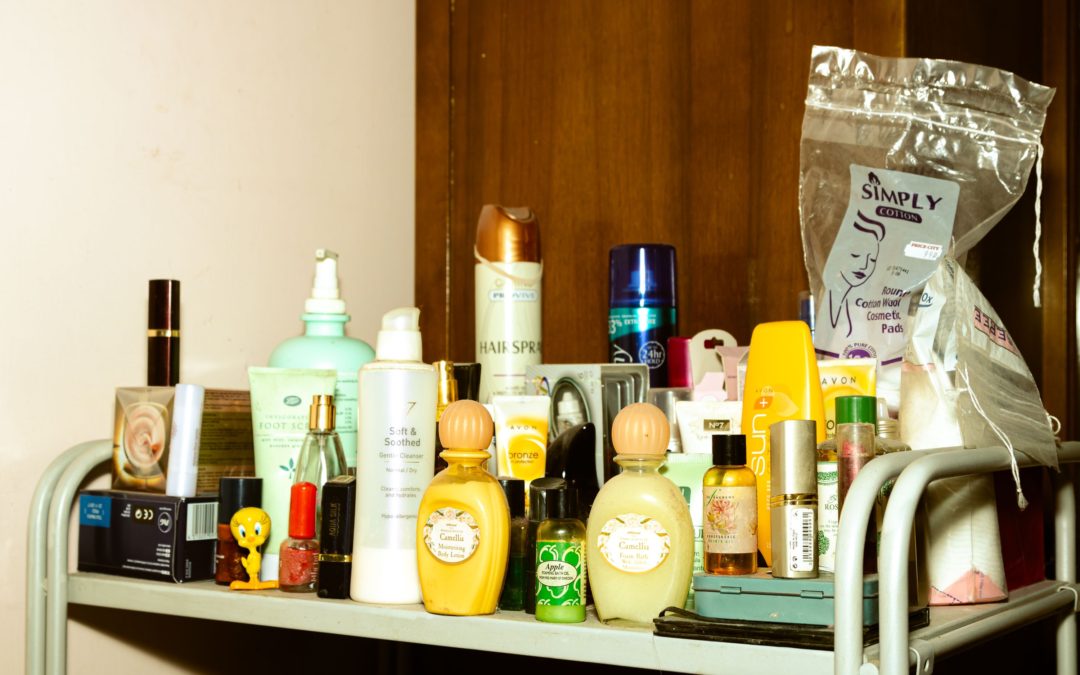What Are You Putting On Your Body?
Ladies, we need to talk. Actually, guys, we need to talk as well. Both women and men are using more body care products than ever before. In the United States, on average, women use 12 body care products everyday, and most men a few less than that. Teens can use up to 17 products. This can add up to nearly 170 chemicals you’re putting on your body every day! Seem like a lot? I’m actually surprised this number is not a lot higher. Most women I know use considerably more products than the average. That might sound excessive, but when you break it down, you’ll see how quickly it all adds up.
I’ll use myself as an example. I typically consider myself to be a minimalist, but when I do an honest assessment, you’ll see I’m way off base. Before leaving the house on a typical morning, I will have used toothpaste, soap, shampoo, conditioner, lotion, moisturizer, eye cream, foundation, eye liner, blush, hair gel, deodorant, and lip balm. That’s 13 products I have put on my body before 9am! Compared to most women I know, this is actually quite minimal. I’m generally considered the ‘natural’ one. The point being, many of us are using 20+ body care products every single day without a conscious realization of it. Admittedly that sounds excessive to me, and I could probably cut down on the ones I use myself. How many do you use? Take a moment to count them, I won’t judge!
In the US., the body-care industry was worth 93.5 billion in 2019. And that number is growing rapidly every year. We live in a society that puts tremendous value on looks, so it’s no surprise. The concern here (other than the expense) is what you’re actually putting on your body. Body care products are not subject to the same safety standards that food products are. Though I would argue that they should be. My general rule of thumb is: ‘If you wouldn’t put it in your mouth, you shouldn’t put it on your skin.’
The skin is considered the largest organ of the body. It’s highly absorptive. What you put on your skin gets absorbed into direct circulation in the body. When you eat or drink something, that food or liquid has to go through the liver first, and is ‘detoxified’ to some degree. When we absorb something through the skin, that step is bypassed and therefore, no detoxification happens. So you can actually get a bigger impact from transdermal application than ingestion. Think about a nicotine patch, or birth control. They both deliver chemicals into your blood stream directly through your skin. So, you can see how what you put on your skin should be just as much of a consideration as what you put in your mouth.

The disturbing fact is that numerous chemicals are allowed in body care products and considered to be safe; even though on their own, they can cause serious health problems. Conventional products contain a host of concerning ingredients. Fragrances (usually artificial) which you’ll find in nearly all products, is a known neurotoxin. Exposure includes headaches, respiratory issues, hormone imbalance, and skin issues. Phthalates and parabens are found in numerous body care products including soap, shampoo, moisturizers, sunscreens, toothpastes, deodorants, and many others, and are known endocrine disruptors. Heavy metals are often found in cosmetics, and the list goes on…
Many ingredients don’t even have to be listed if the product is ‘proprietary’; so you literally have no idea what might be in it. I don’t know about you, but personally, I am NOT okay with that. I live in my body, and just like I wouldn’t bring toxic chemicals into my home, I absolutely would not allow them on my body.
So then, what’s the answer? Bathing in the river? Go ‘au natural?’ Patchouli oil? I’m actually a big fan of all those things, but if that doesn’t quite cut it for you, then rest assured you do have options in this crazy chemically based world we live in.
Thankfully, the natural care industry is bigger than ever. More awareness about this issue is demanding more natural, healthy, and chemical-free products. You can find quality products almost anywhere. One word of caution though – don’t fall victim to false advertising or ‘greenwashing’. As you transition to healthier products, be aware of marketing ploys used on packaging. There is little to no oversight when it comes to claims that companies make. Phrases like:

- ‘All natural’
- ‘100% pure’
- ‘Dermatologist recommended’
- ‘Made with natural ingredients’
- ‘Hypoallergenic’
- ‘Eco-friendly’
…all mean nothing. The health and beauty aid industry is pretty much unregulated in this way. As demand for healthier products grows, companies try to appeal to consumer’s demands, and so the greenwashing prevails.
So what is a consumer to do? If you want to avoid toxic chemicals and not-so-good for you ingredients, then you have to learn how to read labels. I know this can be overwhelming, but once you know what you’re looking for, it becomes second nature. To start, look for those key ingredients I listed above: fragrances, phthalates, and parabens. If these are in the product, avoid it! *Note, some quality products may have natural fragrances listed as essential oils, these are ok!
Next, if there are ingredients that you can’t identify, then you may want to avoid it also. I say may because sometimes healthy ingredients have a long-complicated name which can be confusing. Take for example the methylcobalamin. Sounds ominous right? Would you avoid that? Well, methylcobalamin is actually just a methylated form of Vitamin B-12. It’s actually a very good thing! So, in the beginning, it’s going to take a little practice. I suggest using an online tool like the Skin Deep website published by the Environmental Working Group. If you’re unsure about a specific ingredient, just type it in to their search engine and it will give you a safety report. I used this website for many years before I started to recognize the ingredients from memory.
Another great way to ease the process is to identify a certain brand that you trust, and stick with that brand. It may take some initial research to identify a brand that meets your standards and works well for you, but it’s worth it. Your local natural health food store or Coop is a good place to start. Most of them have a well-stocked body care and cosmetics department. Remember, this isn’t just about lotions and shampoos, but also about make-up, first aid care, sunscreen, lip balm, shaving cream, bug spray, and anything else you might put on your skin. Yes, it ALL matters. I suggest you try a few products from a few different brands until you find the brand (or a few) that you really love, and stick with it. Of course, asking your friends for recommendations is also a great idea. You can also find good quality products online. I use my Wellevate dispensary to get all of my body care. They only carry brands trusted, chemical-free brands that meet their rigorous standards. Want to try it out? I offer everything in the store at a 25% discount for all of my readers, and free shipping! It’s a great way to experiment with different products so you can find the right ones for you.
Want a personal recommendation? Contact us, we always love to hear from you!


Cathy Cooke, BCHN, BBEC Holistic Nutritionist and Building Biologist is the founder of Whole Home and Body Health which provides EMF Assessments, Mold Testing, and Nutrition and Health Consulting located in Boise, Idaho. Cathy is available for consulting via skype and phone, and is also willing to travel as needed for home assessments. Schedule an appointment today!

